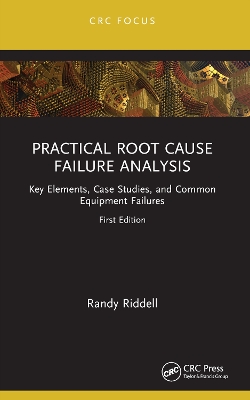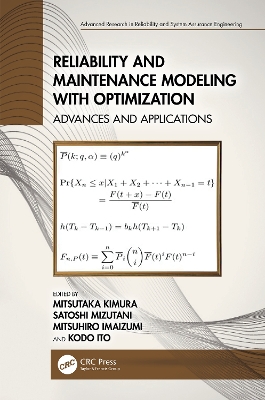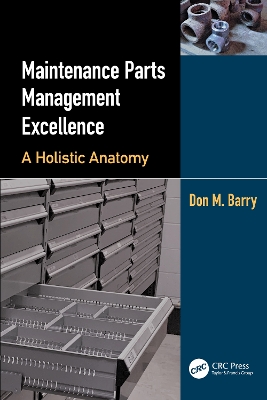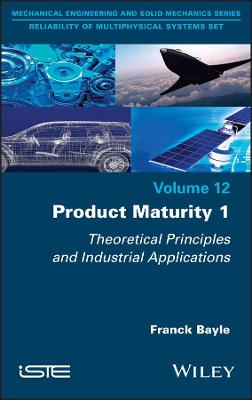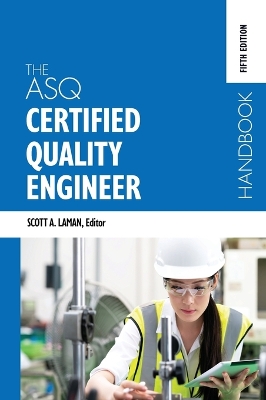Product Maturity, Volume 2
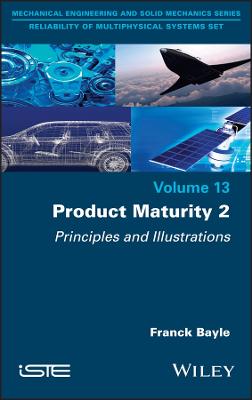 portes grátis
portes grátis
Product Maturity, Volume 2
Principles and Illustrations
Bayle, Franck
ISTE Ltd and John Wiley & Sons Inc
07/2022
192
Dura
Inglês
9781786307408
15 a 20 dias
453
Descrição não disponível.
Foreword by Laurent Denis ix
Foreword by Serge Zaninotti xiii
Acknowledgements xv
Introduction xvii
Chapter 1 Sampling in Manufacturing 1
1.1 Cost aspects 2
1.2 Considering the distribution of defects 7
1.3 Considering the test coverage 10
Chapter 2 Compliance Test 13
Chapter 3 Non-Regression Tests 17
3.1 Non-regression on a physical quantity 17
3.2 Non-regression depending on time 20
Chapter 4 Zero-Failure Reliability Demonstration 23
4.1 Purpose of zero-failure tests 23
4.2 Theoretical principle 23
4.2.1 Non-maintained products 24
4.2.2 Maintained products 29
4.2.3 Estimation of parameter ? 32
4.2.4 Physical laws of failure 35
4.3 Optimization of test costs 42
4.4 Specific cases 48
4.4.1 Imposed number of parts 48
4.4.2 Imposed testing time 48
4.4.3 Imposed testing time and number of parts 49
4.4.4 A test was already conducted and the demonstrated reliability should be estimated 50
4.4.5 One test was already conducted and failure to demonstrate reliability must be known 51
4.4.6 Two tests were conducted 51
4.4.7 A second test is conducted 60
4.4.8 Reliability objective is a failure rate 69
4.4.9 Reliability data are available from the manufacturer 71
4.4.10 Demonstration of reliability at the product level 74
4.4.11 Taking into account a complex life profile 76
Chapter 5 Reliability Management 79
5.1 Context 79
5.2 Physical architecture division 80
5.3 Classification of subsets 81
5.4 Allocation of initial reliability 81
5.5 Estimation of the reliability of subsets 82
5.5.1 Consistency with the experience feedback 85
5.5.2 Estimation of the power of the test 85
5.5.3 Simulation algorithm 85
5.6 Optimal allocation of the reliability of subsets 90
5.7 Illustration 90
5.8 Definition of design rules 103
5.9 Construction of a global predicted reliability model with several manufacturers 107
Chapter 6 Confirmation of Maturity 115
6.1 Internal data from equipment manufacturer 115
6.2 System manufacturer data 117
6.2.1 Original fit removal rate or "zero hour returns" 117
6.3 End-customer data 121
6.3.1 Burn-in effectiveness 121
6.3.2 First failure analysis 121
6.3.3 Method based on failure analysis 124
6.3.4 Observed reliability 124
6.3.5 Estimation of the forecasting number of catastrophic failures 128
6.4 Burn-in optimization 134
6.4.1 Distribution of failures observed during HASS cycles 134
6.4.2 Verification of the degradation of the manufacturing process 136
List of Notations 139
List of Definitions 141
List of Acronyms 147
References 151
Index 155
Foreword by Serge Zaninotti xiii
Acknowledgements xv
Introduction xvii
Chapter 1 Sampling in Manufacturing 1
1.1 Cost aspects 2
1.2 Considering the distribution of defects 7
1.3 Considering the test coverage 10
Chapter 2 Compliance Test 13
Chapter 3 Non-Regression Tests 17
3.1 Non-regression on a physical quantity 17
3.2 Non-regression depending on time 20
Chapter 4 Zero-Failure Reliability Demonstration 23
4.1 Purpose of zero-failure tests 23
4.2 Theoretical principle 23
4.2.1 Non-maintained products 24
4.2.2 Maintained products 29
4.2.3 Estimation of parameter ? 32
4.2.4 Physical laws of failure 35
4.3 Optimization of test costs 42
4.4 Specific cases 48
4.4.1 Imposed number of parts 48
4.4.2 Imposed testing time 48
4.4.3 Imposed testing time and number of parts 49
4.4.4 A test was already conducted and the demonstrated reliability should be estimated 50
4.4.5 One test was already conducted and failure to demonstrate reliability must be known 51
4.4.6 Two tests were conducted 51
4.4.7 A second test is conducted 60
4.4.8 Reliability objective is a failure rate 69
4.4.9 Reliability data are available from the manufacturer 71
4.4.10 Demonstration of reliability at the product level 74
4.4.11 Taking into account a complex life profile 76
Chapter 5 Reliability Management 79
5.1 Context 79
5.2 Physical architecture division 80
5.3 Classification of subsets 81
5.4 Allocation of initial reliability 81
5.5 Estimation of the reliability of subsets 82
5.5.1 Consistency with the experience feedback 85
5.5.2 Estimation of the power of the test 85
5.5.3 Simulation algorithm 85
5.6 Optimal allocation of the reliability of subsets 90
5.7 Illustration 90
5.8 Definition of design rules 103
5.9 Construction of a global predicted reliability model with several manufacturers 107
Chapter 6 Confirmation of Maturity 115
6.1 Internal data from equipment manufacturer 115
6.2 System manufacturer data 117
6.2.1 Original fit removal rate or "zero hour returns" 117
6.3 End-customer data 121
6.3.1 Burn-in effectiveness 121
6.3.2 First failure analysis 121
6.3.3 Method based on failure analysis 124
6.3.4 Observed reliability 124
6.3.5 Estimation of the forecasting number of catastrophic failures 128
6.4 Burn-in optimization 134
6.4.1 Distribution of failures observed during HASS cycles 134
6.4.2 Verification of the degradation of the manufacturing process 136
List of Notations 139
List of Definitions 141
List of Acronyms 147
References 151
Index 155
Este título pertence ao(s) assunto(s) indicados(s). Para ver outros títulos clique no assunto desejado.
maturity; product maturity; illustrations
Foreword by Laurent Denis ix
Foreword by Serge Zaninotti xiii
Acknowledgements xv
Introduction xvii
Chapter 1 Sampling in Manufacturing 1
1.1 Cost aspects 2
1.2 Considering the distribution of defects 7
1.3 Considering the test coverage 10
Chapter 2 Compliance Test 13
Chapter 3 Non-Regression Tests 17
3.1 Non-regression on a physical quantity 17
3.2 Non-regression depending on time 20
Chapter 4 Zero-Failure Reliability Demonstration 23
4.1 Purpose of zero-failure tests 23
4.2 Theoretical principle 23
4.2.1 Non-maintained products 24
4.2.2 Maintained products 29
4.2.3 Estimation of parameter ? 32
4.2.4 Physical laws of failure 35
4.3 Optimization of test costs 42
4.4 Specific cases 48
4.4.1 Imposed number of parts 48
4.4.2 Imposed testing time 48
4.4.3 Imposed testing time and number of parts 49
4.4.4 A test was already conducted and the demonstrated reliability should be estimated 50
4.4.5 One test was already conducted and failure to demonstrate reliability must be known 51
4.4.6 Two tests were conducted 51
4.4.7 A second test is conducted 60
4.4.8 Reliability objective is a failure rate 69
4.4.9 Reliability data are available from the manufacturer 71
4.4.10 Demonstration of reliability at the product level 74
4.4.11 Taking into account a complex life profile 76
Chapter 5 Reliability Management 79
5.1 Context 79
5.2 Physical architecture division 80
5.3 Classification of subsets 81
5.4 Allocation of initial reliability 81
5.5 Estimation of the reliability of subsets 82
5.5.1 Consistency with the experience feedback 85
5.5.2 Estimation of the power of the test 85
5.5.3 Simulation algorithm 85
5.6 Optimal allocation of the reliability of subsets 90
5.7 Illustration 90
5.8 Definition of design rules 103
5.9 Construction of a global predicted reliability model with several manufacturers 107
Chapter 6 Confirmation of Maturity 115
6.1 Internal data from equipment manufacturer 115
6.2 System manufacturer data 117
6.2.1 Original fit removal rate or "zero hour returns" 117
6.3 End-customer data 121
6.3.1 Burn-in effectiveness 121
6.3.2 First failure analysis 121
6.3.3 Method based on failure analysis 124
6.3.4 Observed reliability 124
6.3.5 Estimation of the forecasting number of catastrophic failures 128
6.4 Burn-in optimization 134
6.4.1 Distribution of failures observed during HASS cycles 134
6.4.2 Verification of the degradation of the manufacturing process 136
List of Notations 139
List of Definitions 141
List of Acronyms 147
References 151
Index 155
Foreword by Serge Zaninotti xiii
Acknowledgements xv
Introduction xvii
Chapter 1 Sampling in Manufacturing 1
1.1 Cost aspects 2
1.2 Considering the distribution of defects 7
1.3 Considering the test coverage 10
Chapter 2 Compliance Test 13
Chapter 3 Non-Regression Tests 17
3.1 Non-regression on a physical quantity 17
3.2 Non-regression depending on time 20
Chapter 4 Zero-Failure Reliability Demonstration 23
4.1 Purpose of zero-failure tests 23
4.2 Theoretical principle 23
4.2.1 Non-maintained products 24
4.2.2 Maintained products 29
4.2.3 Estimation of parameter ? 32
4.2.4 Physical laws of failure 35
4.3 Optimization of test costs 42
4.4 Specific cases 48
4.4.1 Imposed number of parts 48
4.4.2 Imposed testing time 48
4.4.3 Imposed testing time and number of parts 49
4.4.4 A test was already conducted and the demonstrated reliability should be estimated 50
4.4.5 One test was already conducted and failure to demonstrate reliability must be known 51
4.4.6 Two tests were conducted 51
4.4.7 A second test is conducted 60
4.4.8 Reliability objective is a failure rate 69
4.4.9 Reliability data are available from the manufacturer 71
4.4.10 Demonstration of reliability at the product level 74
4.4.11 Taking into account a complex life profile 76
Chapter 5 Reliability Management 79
5.1 Context 79
5.2 Physical architecture division 80
5.3 Classification of subsets 81
5.4 Allocation of initial reliability 81
5.5 Estimation of the reliability of subsets 82
5.5.1 Consistency with the experience feedback 85
5.5.2 Estimation of the power of the test 85
5.5.3 Simulation algorithm 85
5.6 Optimal allocation of the reliability of subsets 90
5.7 Illustration 90
5.8 Definition of design rules 103
5.9 Construction of a global predicted reliability model with several manufacturers 107
Chapter 6 Confirmation of Maturity 115
6.1 Internal data from equipment manufacturer 115
6.2 System manufacturer data 117
6.2.1 Original fit removal rate or "zero hour returns" 117
6.3 End-customer data 121
6.3.1 Burn-in effectiveness 121
6.3.2 First failure analysis 121
6.3.3 Method based on failure analysis 124
6.3.4 Observed reliability 124
6.3.5 Estimation of the forecasting number of catastrophic failures 128
6.4 Burn-in optimization 134
6.4.1 Distribution of failures observed during HASS cycles 134
6.4.2 Verification of the degradation of the manufacturing process 136
List of Notations 139
List of Definitions 141
List of Acronyms 147
References 151
Index 155
Este título pertence ao(s) assunto(s) indicados(s). Para ver outros títulos clique no assunto desejado.

